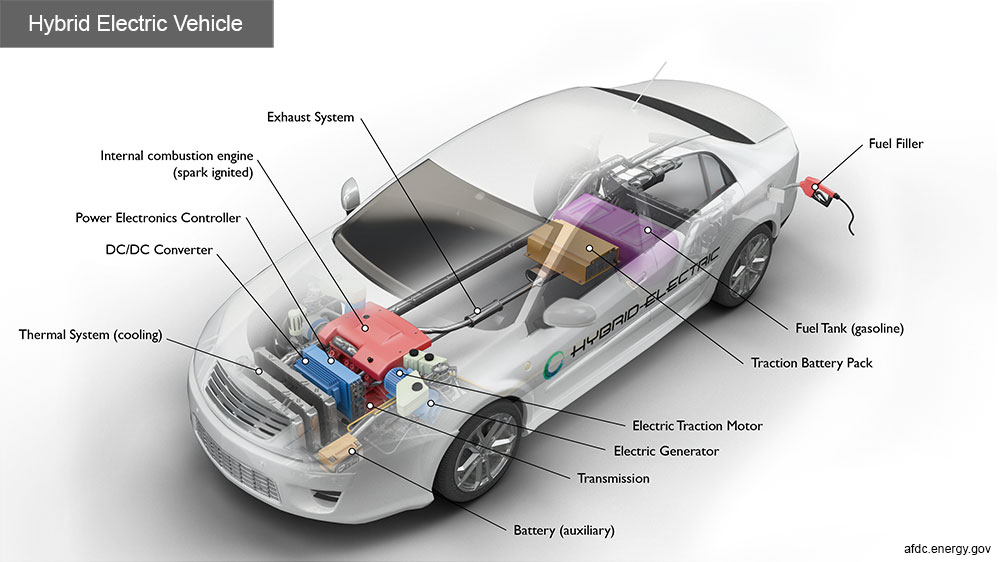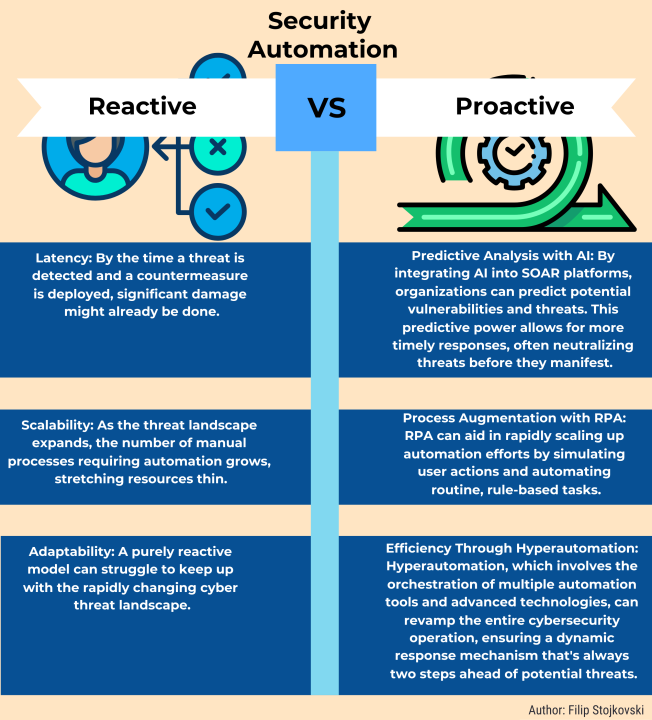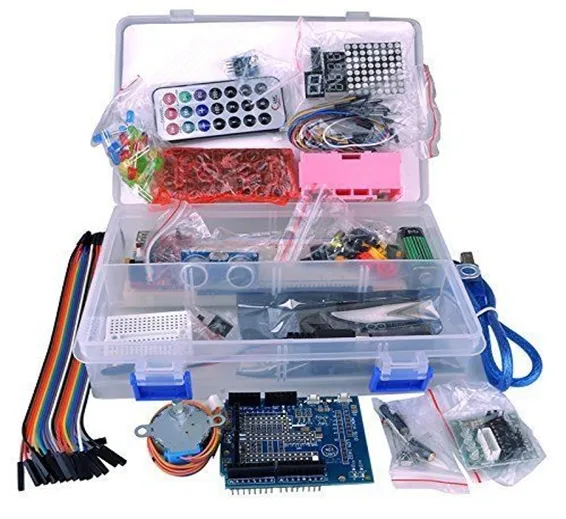Plug-in Hybrid and Electric Cars:
- Tesla Model S: The Model S is an all-electric luxury sedan known for its impressive range, acceleration, and cutting-edge technology features. It offers a sleek design, spacious interior, and over-the-air software updates that continuously improve the vehicle’s performance and features.
- Chevrolet Bolt EV: The Bolt EV is an affordable all-electric hatchback that offers a long electric range, making it suitable for daily commuting and longer trips. It has a roomy interior, user-friendly infotainment system, and a comfortable ride.
- BMW i3: The BMW i3 is a compact electric car designed for city driving. It features a unique and futuristic design, with a carbon fiber-reinforced plastic body for weight reduction. The i3 offers good acceleration and a customizable interior with sustainable materials.
- Toyota Prius Prime: The Prius Prime is a plug-in hybrid that combines the benefits of electric and gasoline power. It offers an electric range for short commutes and can switch to gasoline for longer trips. The Prius Prime is known for its fuel efficiency, reliability, and spacious interior.
- Nissan Leaf: The Leaf is one of the most popular electric cars in the world. It provides a comfortable ride, decent range, and affordable pricing. The Leaf has evolved over the years with improved battery technology and advanced safety features.
Tesla Model S:
The Tesla Model S is an all-electric luxury sedan manufactured by Tesla Inc. Known for its high-performance capabilities, cutting-edge technology, and impressive electric range, the Model S has been a significant player in the electric vehicle market since its introduction in 2012. Here are some key features and aspects of the Tesla Model S:
- Design and Performance: The Model S boasts a sleek and aerodynamic design, featuring a minimalist exterior with smooth lines and a distinctive front grille-less front fascia. It offers ample interior space for passengers and cargo. The Model S is available in various trims, including performance-focused versions like the “Plaid” that deliver exceptional acceleration and top speeds.
- Electric Range and Charging: The Model S has one of the longest electric ranges available in a production electric car. It varies depending on the battery pack and configuration, with ranges typically exceeding 300 miles (480+ kilometers) on a single charge. Tesla’s Supercharger network enables fast charging, allowing owners to replenish a significant amount of range in a short period.
- Battery Technology: Tesla has continuously improved its battery technology, providing increased energy density and efficiency. The Model S utilizes advanced lithium-ion battery packs, with different capacity options available to suit varying range requirements and performance preferences.
- Autopilot and Full Self-Driving: The Model S is equipped with Tesla’s Autopilot system, which offers advanced driver-assistance features such as adaptive cruise control, lane-keeping, and automatic emergency braking. Additionally, Tesla offers an optional Full Self-Driving (FSD) package that aims to provide full autonomous driving capability, subject to regulatory approval and further development.
- Infotainment and Connectivity: The Model S features a large central touchscreen display that controls various vehicle functions, including navigation, media playback, climate control, and access to Tesla’s app ecosystem. It supports over-the-air software updates, which bring new features and improvements to the vehicle over time.
- Safety Features: The Model S has achieved high safety ratings and is equipped with advanced safety features like collision avoidance, multiple airbags, stability control, and a reinforced battery pack for enhanced protection. Its low center of gravity, due to the placement of the battery pack, contributes to its stability and handling characteristics.
- Interior Comfort and Luxury: The Model S offers a premium interior with high-quality materials, comfortable seating, and a minimalist design aesthetic. It provides advanced comfort features like heated seats, customizable driver profiles, and dual-zone climate control.
- Sustainability: As an all-electric vehicle, the Model S produces zero tailpipe emissions, contributing to a cleaner environment and reducing dependence on fossil fuels.
It’s important to note that Tesla regularly updates and enhances its vehicles, so specific features and capabilities may vary based on the model year and available options. Prospective buyers should refer to the official Tesla website or consult with Tesla representatives for the most up-to-date information on the Model S.
Chevrolet Bolt EV:
The Chevrolet Bolt EV is a compact all-electric hatchback produced by General Motors. It was introduced in 2016 as one of the first affordable long-range electric vehicles on the market. Here are some key features and aspects of the Chevrolet Bolt EV:
- Electric Range and Battery: The Bolt EV is known for its impressive electric range. It typically offers over 200 miles (320+ kilometers) of range on a full charge, making it suitable for daily commuting and longer trips. The vehicle is powered by a high-capacity lithium-ion battery pack, which is positioned in the floor to maximize interior space.
- Design and Interior: The Bolt EV features a modern and practical design with a compact yet spacious interior. It offers comfortable seating for five passengers and ample cargo space. The interior design emphasizes functionality, with user-friendly controls and a driver-centric layout.
- Performance: The Bolt EV provides responsive and peppy acceleration, thanks to its electric motor. It delivers instant torque and smooth power delivery, making it enjoyable to drive in urban environments. While not a high-performance vehicle, it offers sufficient power for daily driving needs.
- Charging Capabilities: The Bolt EV supports both AC and DC fast charging. With DC fast charging, the vehicle can recharge its battery significantly faster, allowing for quicker top-ups during longer trips. It’s important to note that charging infrastructure availability may vary depending on the region.
- Infotainment and Connectivity: The Bolt EV is equipped with a user-friendly infotainment system that integrates with smartphones through Apple CarPlay and Android Auto. The system provides access to navigation, media, and other apps. The vehicle also offers a Wi-Fi hotspot and available wireless device charging.
- Safety Features: The Bolt EV incorporates advanced safety features such as forward collision alert, lane-keeping assist, rear cross-traffic alert, and a rearview camera. It has also received good safety ratings from reputable organizations.
- Regenerative Braking: The Bolt EV utilizes regenerative braking technology, which helps maximize energy efficiency. It captures and converts energy during deceleration and braking, then stores it in the battery pack for later use, increasing overall range.
- Sustainability: As an all-electric vehicle, the Bolt EV produces zero tailpipe emissions, contributing to reduced greenhouse gas emissions and air pollution. It helps drivers minimize their carbon footprint and reduce dependence on fossil fuels.
It’s worth noting that Chevrolet introduced an updated version of the Bolt EV in 2022, featuring refreshed styling and improvements in various areas. Prospective buyers should refer to the official Chevrolet website or consult with Chevrolet dealers for the most up-to-date information on the Bolt EV, including specifications, range, and available options.
BMW i3:
The BMW i3 is a compact electric vehicle (EV) manufactured by BMW. It was introduced in 2013 as BMW’s first fully electric production car. The i3 stands out with its unique design, sustainable materials, and advanced electric drivetrain. Here are some key features and aspects of the BMW i3:
- Design and Construction: The BMW i3 features a distinctive and futuristic design. Its body structure is built using carbon fiber-reinforced plastic (CFRP), which makes it lightweight and contributes to its efficiency. The i3 has a compact footprint and offers a spacious interior with seating for up to four passengers.
- Electric Range and Battery: The i3 is designed primarily for urban commuting and offers a respectable electric range. Depending on the model year and battery option, the i3 typically provides around 150-200 miles (240-320 kilometers) of range on a full charge. The vehicle utilizes a high-voltage lithium-ion battery pack positioned under the floor.
- Performance: The BMW i3 delivers instant torque and responsive acceleration, making it agile and enjoyable to drive in urban environments. It offers a smooth and quiet ride, characteristic of electric vehicles. The i3 is not intended as a high-performance vehicle, but it provides adequate power for everyday driving needs.
- Range Extender Option: In addition to the all-electric version, BMW offers an i3 model with a range extender (REx). The REx variant includes a small gasoline engine that acts as a generator, providing additional electricity to extend the range when the battery is depleted. This option adds peace of mind for those concerned about range anxiety.
- Sustainable Materials: The BMW i3 places a strong emphasis on sustainability. It incorporates eco-friendly materials in its interior, such as recycled plastics, natural fibers, and responsibly sourced wood. The use of renewable and recycled materials aligns with BMW’s commitment to sustainability.
- Infotainment and Technology: The i3 features BMW’s iDrive infotainment system, which includes a central display and a rotary controller. It offers navigation, media playback, and various connectivity features. The i3 also supports Apple CarPlay and Android Auto integration for seamless smartphone connectivity.
- Safety Features: The BMW i3 includes safety features like stability control, traction control, antilock brakes, multiple airbags, and a rearview camera. Advanced driver-assistance systems such as adaptive cruise control, forward collision warning, and automated parking assist are available as options.
- Urban Mobility Focus: The i3’s compact size and tight turning radius make it well-suited for urban driving and maneuvering through tight city streets. Its small footprint and nimble handling contribute to its urban-friendly nature.
It’s important to note that specific features and specifications of the BMW i3 may vary based on the model year and available options. Potential buyers should refer to the official BMW website or consult with BMW dealers for the most up-to-date information on the i3.
Toyota Prius Prime:
The Toyota Prius Prime is a plug-in hybrid electric vehicle (PHEV) based on the popular Toyota Prius hybrid model. The Prius Prime combines a gasoline engine with an electric motor and a larger battery pack to offer extended electric driving range. Here are some key features and aspects of the Toyota Prius Prime:
- Plug-In Hybrid Efficiency: The Prius Prime is designed to offer improved fuel efficiency and reduced emissions compared to conventional gasoline vehicles. It can operate in electric mode for a significant distance before switching to hybrid mode, where the gasoline engine provides additional power. This allows for reduced fuel consumption, especially during shorter commutes.
- Electric Range and Charging: The Prius Prime offers an all-electric driving range, typically around 25-30 miles (40-48 kilometers) depending on driving conditions and battery charge. It can be charged by plugging into a standard electrical outlet or a dedicated EV charging station. Charging times vary, but a full charge can typically be achieved in a few hours using a Level 2 charger.
- Gasoline Hybrid Efficiency: When the electric charge is depleted or additional power is needed, the Prius Prime operates as a conventional hybrid vehicle. It utilizes a gasoline engine in combination with the electric motor to optimize efficiency and reduce fuel consumption. The hybrid system intelligently switches between electric and gasoline power to deliver the best overall efficiency.
- Design and Interior: The Prius Prime shares its overall design with the standard Prius but features some unique styling elements. It has a modern and aerodynamic exterior, with a sleek and distinctive look. Inside, it offers comfortable seating for up to five passengers and a versatile cargo space.
- Technology and Features: The Prius Prime includes various technology features to enhance the driving experience. It typically comes equipped with an infotainment system featuring a touchscreen display, navigation, smartphone integration, and available advanced safety features such as adaptive cruise control and lane-keeping assist.
- Regenerative Braking: Similar to other hybrid and electric vehicles, the Prius Prime utilizes regenerative braking technology to capture and store energy that is normally lost during braking. This energy is then used to recharge the battery, increasing overall efficiency and range.
- Charging Infrastructure: The Prius Prime can be charged using standard electrical outlets or dedicated EV charging stations. Charging infrastructure availability may vary depending on the region. It’s worth noting that the Prius Prime is equipped with a feature that helps locate nearby charging stations and provides real-time charging information.
- Toyota Reliability: Toyota has a strong reputation for reliability, and the Prius Prime benefits from the company’s commitment to quality and durability. Toyota’s hybrid technology has been refined over many years, and the Prius Prime benefits from the knowledge gained from previous Prius models.
It’s important to consider that specific features and specifications of the Toyota Prius Prime may vary based on the model year and available options. Potential buyers should refer to the official Toyota website or consult with Toyota dealers for the most up-to-date information on the Prius Prime.
Nissan Leaf:
The Nissan Leaf is a compact all-electric vehicle (EV) manufactured by Nissan. It was one of the first affordable mass-market electric cars and has become one of the best-selling EVs globally. The Leaf offers a combination of practicality, range, and accessible pricing. Here are some key features and aspects of the Nissan Leaf:
- Electric Range and Battery: The Leaf’s electric range has evolved with each model update. Depending on the model year and battery capacity, the Leaf typically offers a range of around 150-226 miles (240-364 kilometers) on a full charge. It utilizes a lithium-ion battery pack that is positioned in the floor, contributing to a low center of gravity for improved stability.
- Design and Interior: The Leaf has a contemporary and aerodynamic design, with a hatchback body style. Its interior provides comfortable seating for up to five passengers and offers a practical cargo space. The cabin features modern design elements and user-friendly controls.
- Charging Capabilities: The Leaf supports both AC and DC fast charging. With DC fast charging, the Leaf can recharge its battery to 80% capacity in a relatively short amount of time, making it convenient for longer trips or when a quick charge is needed. AC charging is suitable for overnight charging at home or at public charging stations.
- Performance: The Leaf delivers smooth and quiet acceleration due to its electric drivetrain. It offers instant torque, allowing for quick and responsive acceleration. While not designed as a high-performance vehicle, the Leaf provides sufficient power for daily driving needs.
- Technology and Features: The Leaf comes equipped with various technology features. Depending on the model year and trim level, it may include an infotainment system with a touchscreen display, smartphone integration, navigation, and available advanced driver-assistance systems like adaptive cruise control and automatic emergency braking.
- Regenerative Braking: The Leaf employs regenerative braking, capturing and converting energy during deceleration and braking to recharge the battery. This technology helps maximize efficiency and range by harnessing energy that would otherwise be wasted.
- Safety Features: The Leaf incorporates safety features such as stability control, traction control, antilock brakes, multiple airbags, and a rearview camera. Depending on the model year and trim level, additional safety features like blind-spot monitoring and lane-keeping assist may be available.
- Nissan’s EV Experience: Nissan has been at the forefront of electric vehicle development for years, and the Leaf benefits from the company’s experience in EV technology. Nissan has a growing network of charging stations and offers resources to help Leaf owners find charging infrastructure and optimize their EV ownership experience.
It’s important to note that specific features and specifications of the Nissan Leaf may vary based on the model year and available options. Prospective buyers should refer to the official Nissan website or consult with Nissan dealers for the most up-to-date information on the Leaf.
Latest Developments in Autonomous Vehicle Tech:
- Waymo: Waymo, a subsidiary of Alphabet Inc. (Google’s parent company), is a leader in autonomous vehicle technology. They have been testing self-driving cars extensively and have launched a commercial autonomous ride-hailing service in select cities.
- Tesla Autopilot: Tesla’s Autopilot is an advanced driver-assistance system that offers semi-autonomous capabilities. Tesla continues to develop and refine its Autopilot system through regular software updates, aiming for full self-driving capability in the future.
- Cruise: Cruise, a self-driving car subsidiary of General Motors, has been developing and testing autonomous vehicles. They have plans to launch a commercial ride-hailing service using self-driving electric cars in the near future.
- Mobileye: Mobileye, an Intel company, focuses on developing advanced driver-assistance systems and autonomous vehicle technology. They are working with various automakers to integrate their technology into production vehicles.
Waymo:
Waymo is a self-driving technology company that originated as a project within Google (now Alphabet Inc.). It focuses on the development of autonomous vehicle technology and is considered one of the leaders in the field. Here are some key aspects and developments related to Waymo:
- Autonomous Vehicle Technology: Waymo is primarily known for its advancements in autonomous driving technology. The company has developed a suite of sensors, including lidar, radar, and cameras, that enable its vehicles to perceive and understand their surroundings. Waymo’s software and algorithms process this sensor data to make real-time decisions and control the vehicle.
- Self-Driving Vehicle Fleet: Waymo operates a fleet of autonomous vehicles that have been tested extensively on public roads. Initially, Waymo used modified conventional vehicles, such as the Lexus RX and the Chrysler Pacifica minivan, but the company has also developed its own purpose-built vehicle called the Waymo Driver.
- Ride-Hailing and Autonomous Taxi Service: Waymo has launched a commercial ride-hailing service called Waymo One in select areas. This service allows users to book rides in autonomous vehicles through a mobile app. It represents one of the first applications of autonomous vehicle technology for public use.
- Safety and Reliability: Waymo places a strong emphasis on safety and has accumulated millions of miles of autonomous driving experience through rigorous testing. The company aims to develop a technology that is safer than human drivers and adheres to strict safety protocols and standards.
- Partnerships and Collaborations: Waymo has collaborated with various automotive manufacturers and ridesharing companies to integrate its autonomous technology into their vehicles. Notably, Waymo partnered with Fiat Chrysler Automobiles (FCA) to retrofit Chrysler Pacifica minivans for its autonomous taxi service. Waymo has also announced partnerships with Volvo and Jaguar Land Rover.
- Mapping and Localization: Waymo has created highly detailed and accurate maps of the areas in which its vehicles operate. These maps, combined with real-time sensor data, help the vehicles localize themselves precisely and navigate complex environments.
- Testing and Expansion: Waymo has conducted extensive testing in multiple regions to refine its autonomous driving technology. It initially focused on the Phoenix metropolitan area in the United States and expanded its testing to other cities like San Francisco, Detroit, and Miami. Waymo has expressed its intentions to expand its services to more locations in the future.
- Regulatory and Ethical Considerations: Waymo actively engages with policymakers and regulatory bodies to shape the development and deployment of autonomous vehicle technology. The company also addresses ethical considerations related to autonomous driving, such as decision-making algorithms in potential accident scenarios.
It’s important to note that the autonomous driving field is rapidly evolving, and specific details and developments regarding Waymo’s technology and services may have changed since the information cutoff in September 2021. To get the most up-to-date information on Waymo, it is recommended to refer to the official Waymo website or other reliable sources of current news and updates.
Tesla Autopilot:
Tesla Autopilot is an advanced driver-assistance system (ADAS) developed by Tesla, an electric vehicle (EV) manufacturer. Autopilot is designed to assist and enhance the driving experience by providing various semi-autonomous features. Here are some key aspects of Tesla Autopilot:
- Adaptive Cruise Control (ACC): Autopilot includes adaptive cruise control, which maintains a set speed while also adjusting the vehicle’s speed to maintain a safe distance from the vehicle ahead. This feature utilizes sensors, such as radar and cameras, to monitor the traffic environment.
- Traffic-Aware Cruise Control (TACC): TACC is a variant of adaptive cruise control that is specifically designed for traffic conditions. It can bring the vehicle to a complete stop and accelerate it again when traffic starts moving, reducing the driver’s workload in congested traffic situations.
- Autosteer: Autopilot’s autosteer feature uses sensors to keep the vehicle within its lane. It provides steering assistance, helping to maintain the vehicle’s position and reduce the need for constant manual steering input. It is important to note that drivers should remain attentive and keep their hands on the steering wheel while using autosteer.
- Autopark: Autopilot includes an autopark feature that assists with parallel parking and perpendicular parking. The system uses sensors to detect and navigate parking spaces, providing guidance and controlling the vehicle’s steering during the parking maneuver.
- Summon: Tesla’s Summon feature allows the vehicle to navigate short distances in parking lots or private driveways without a driver inside. Using the Tesla mobile app, the driver can command the vehicle to park itself or come to their location within a limited range.
- Navigate on Autopilot: Tesla’s Navigate on Autopilot feature provides highway driving assistance. With the driver’s confirmation, the system can automatically change lanes, navigate interchanges, and take highway exits based on navigation inputs and sensor data. The driver is still responsible for monitoring the system and being prepared to take control if necessary.
- Full Self-Driving (FSD): Tesla offers an optional Full Self-Driving package that is separate from the standard Autopilot features. FSD aims to enable fully autonomous driving capabilities in the future, pending regulatory approval. It is important to note that as of my knowledge cutoff in September 2021, full self-driving capability has not been achieved, and regulatory approval is still pending in many jurisdictions.
- Safety and Limitations: Tesla emphasizes the safety aspect of Autopilot and includes various safety features to ensure driver awareness and attentiveness. However, it’s important to understand that Autopilot is not a fully autonomous system and requires driver supervision at all times. Drivers should be prepared to take control of the vehicle and remain attentive to the road and traffic conditions.
It’s crucial to stay informed about the latest updates and developments regarding Tesla Autopilot. Tesla continues to release software updates and refine Autopilot’s capabilities over time. For the most up-to-date information and guidance on using Tesla Autopilot, it is recommended to refer to Tesla’s official documentation, communications, and user manuals.
Cruise:
Cruise is an autonomous vehicle (AV) technology company based in San Francisco, California. It was founded in 2013 with the goal of developing and deploying self-driving cars for commercial use. Here are some key aspects and developments related to Cruise:
- General Motors (GM) Partnership: Cruise is a subsidiary of General Motors, one of the largest automotive manufacturers in the world. GM acquired Cruise in 2016 to accelerate its efforts in autonomous vehicle development.
- Self-Driving Technology: Cruise focuses on developing the software, sensors, and hardware required for autonomous driving. The company’s technology stack includes perception systems, machine learning algorithms, and high-definition mapping to enable its vehicles to navigate and operate autonomously.
- Fleet of Autonomous Vehicles: Cruise operates a fleet of self-driving vehicles that are being tested on public roads. These vehicles are equipped with an array of sensors, including lidar, radar, and cameras, to perceive their surroundings and make real-time decisions.
- Testing and Deployment: Cruise has conducted extensive testing in complex urban environments, including its home city of San Francisco. The company has obtained permits to conduct autonomous vehicle testing in multiple states across the United States, including California.
- Cruise Origin: In addition to developing autonomous technology, Cruise has designed its own purpose-built electric autonomous vehicle called the Cruise Origin. The Origin is a shared, electric, and self-driving vehicle intended for ride-hailing and shared mobility services. It features a spacious interior and lacks traditional driver controls, as it is designed to be fully autonomous.
- Partnerships and Expansion: Cruise has established partnerships with other companies to advance its autonomous vehicle goals. In 2020, Cruise partnered with Walmart to explore last-mile delivery using autonomous vehicles. Additionally, Cruise announced a partnership with Microsoft to leverage cloud computing capabilities to enhance its autonomous vehicle technology.
- Regulatory Engagement: Cruise actively engages with regulators and policymakers to shape autonomous vehicle policies and regulations. The company has been involved in discussions on safety standards, testing protocols, and deployment guidelines to ensure the responsible and safe introduction of autonomous vehicles on public roads.
- Scalability and Commercial Deployment: Cruise has expressed its commitment to commercializing its self-driving technology and deploying it at scale. The company aims to launch a commercial autonomous ride-hailing service in select markets, with plans to expand its operations over time.
It’s important to note that the autonomous vehicle industry is rapidly evolving, and specific details and developments regarding Cruise’s technology and deployment plans may have changed since the information cutoff in September 2021. To get the most up-to-date information on Cruise, it is recommended to refer to the official Cruise website or other reliable sources of current news and updates.
In-Car Entertainment:
- Apple CarPlay and Android Auto: These platforms allow users to integrate their smartphones with the car’s infotainment system, providing access to music, navigation, messaging, and other apps. Many automakers now offer these systems as standard or optional features.
- Advanced Infotainment Systems: Automakers are incorporating larger touchscreens, voice control, and improved user interfaces in their vehicles. These systems offer features like integrated navigation, streaming services, smartphone connectivity, and advanced audio systems.
- Connectivity and Internet Services: Cars are increasingly equipped with built-in Wi-Fi hotspots, enabling passengers to connect their devices to the internet. This allows for streaming, online browsing, and access to various online services and apps.
- Rear-Seat Entertainment: Many luxury and family-oriented vehicles offer rear-seat entertainment systems with screens, wireless headphones, and media connectivity options. These systems provide entertainment for passengers during long journeys.
These are just a few examples of plug-in hybrid and electric cars, autonomous vehicle technology, and in-car entertainment. The automotive industry is constantly evolving, and new developments are regularly introduced to the market. It’s always recommended to research specific models and their features to get the most up-to-date information.
Conclusion:
Autonomous vehicle technology is advancing rapidly, with companies like Waymo, Tesla, Cruise, and Mobileye at the forefront of development. While fully autonomous vehicles are not yet widely available, these companies are making significant progress towards achieving self-driving capabilities.
In-car entertainment has also seen significant improvements, with the integration of smartphone platforms like Apple CarPlay and Android Auto becoming commonplace. Advanced infotainment systems with larger touchscreens, connectivity options, and rear-seat entertainment features enhance the driving experience for both drivers and passengers.
Overall, the automotive industry is continuously evolving, bringing advancements in electric and autonomous vehicles, as well as in-car entertainment. It’s an exciting time for technology enthusiasts and car buyers alike, with an increasing emphasis on sustainability, connectivity, and innovative features.











